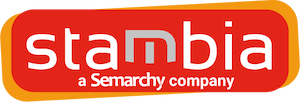 Stambia
The solution to all your data integrations needs
Stambia
The solution to all your data integrations needs

Stambia component for Salesforce
Implementation of Salesforce CRM generally occurs as a result of a customer-centric approach.
However, to build a 360-degree view of the customer, Salesforce needs to be interconnected to the entire Information System.
Salesforce CRM platform can only be fully operational with :
- clean and consolidated data
- effective processes to ensure the quality of this data over time
Therefore, the implementation of a data integration software is often the corner stone and starting point of any business project involving Salesforce.
Stambia's unified technology combined with its powerful Salesforce component can help to reduce deployment time to migrate to the Salesforce ecosystem.
Salesforce Component : different Use Cases
Ensure data quality for an efficient 360-degree view of the customers
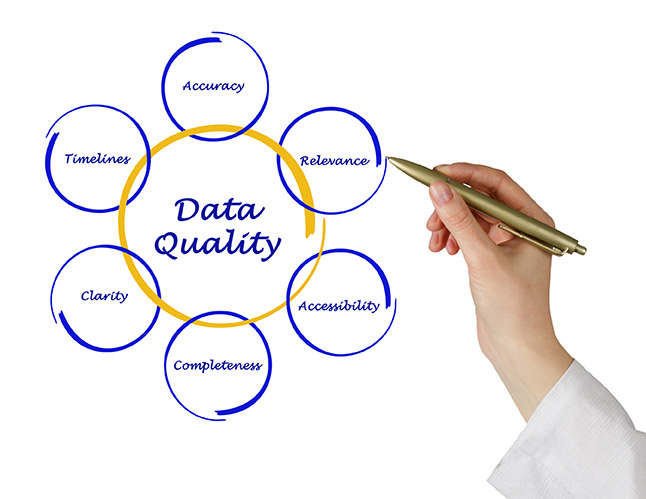
"84% of CEOs are concerned about the quality of the data they’re basing their decisions on."
source : Forbes, 2017
Poor data quality has a direct impact on business activity and its profitability.
Bad or Dirty Data refers to muliple causes : duplicates, typos, missing or incomplete data, obsolete information ...
To get fresh and relevant data, Salesforce must be connected to third-party tools.
It has to be linked with an integration and data quality solution to :
- Feed CRM through Automated External Data Flows
- Keep Salesforce data up-to-date by replacing old data with new
- Feed CRM with enriched data
Salesforce component for Stambia provides the ability to :
- Reconcile customer data
- Homogenize and group data of identical nature or source but coming from different channels
- Reformat the data
- Deduplicate information
- Cleanse and enrich data from Salesforce
- Natively manage rejection of erroneous records
- Orchestrate and mix data from multiple sources
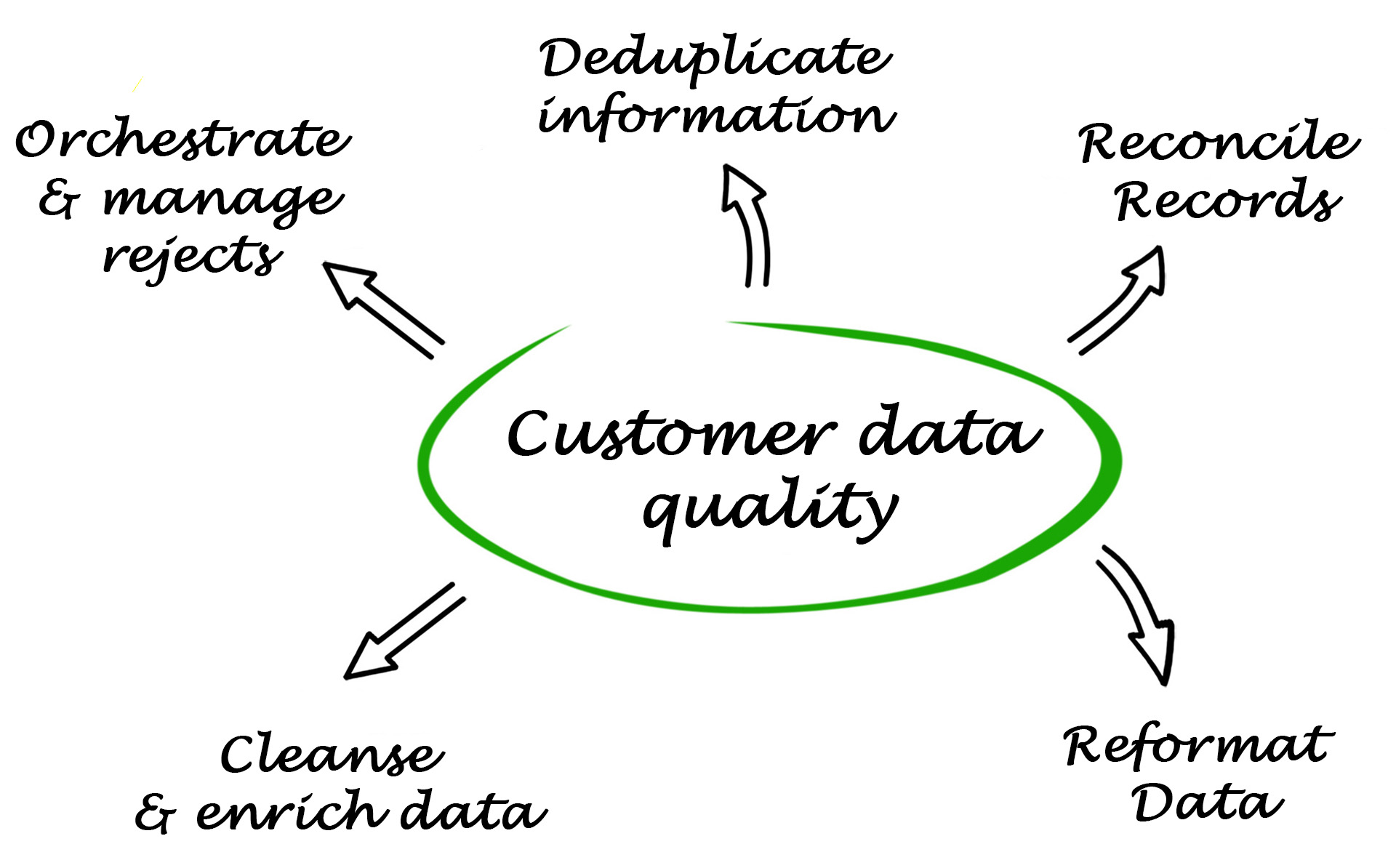
Implementation of a Data Hub architecture to promote data exchanges consistency
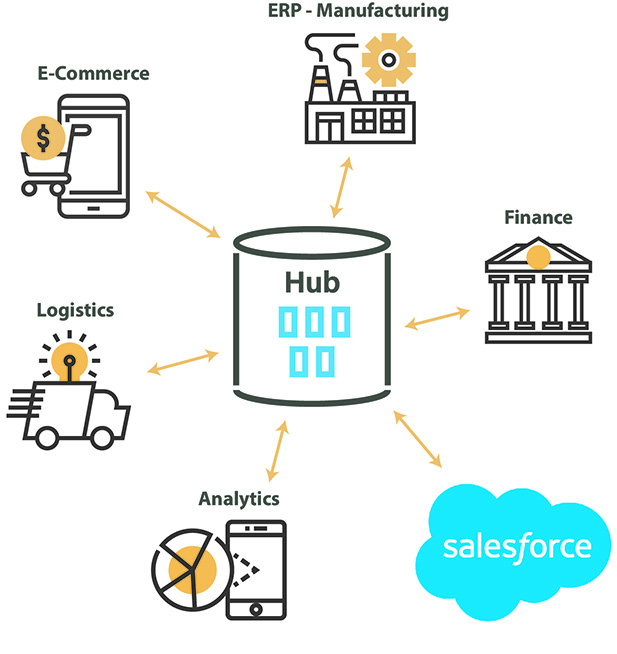
To provide Salesforce with quality data over time, setting up a customer data repository is often required. A data hub concept promotes data exchange with Salesforce.
Analyze data and drive Salesforce more efficiently : Salesforce BI ( Analytics )
Although Salesforce has analytic capabilities through reports & dashboards, it is far from being a true Dataviz decision tool.
Below are some of the challenges that may require the use of a complementary data integration solution:
- Generate reports on data that is not stored in Salesforce
- Analyze historical data
- Create exception reports or PivotTables
- Get more complex data analysis or visualizations
- Pair the Salesforce data with the Data Privacy Protect module to comply with GDPR regulations
How to anonymize / pseudonymize your Salesforce Data ?

Automate your processes in real time

" Seventy-two percent (72%) of firms said managing multiple CRM systems across countries/ technology silos is moderately to extremely challenging."
source dun & bradstreet
Salesforce is a very powerful platform in terms of customer relationship management.
However:- How to link Salesforce to existing legacy ?
- How to unify all your on premise systems around Salesforce ? (accounting, HR management, ERP ...)
- How to avoid data silos and integrate Salesforce with other SaaS Cloud software ?
Stambia technology makes it possible to adapt to the data model of any type of application and to release its data to:
- Make the old CRM coexist with the new one (Parallel running) during the transition period and put into production
- Convert closed opportunities to orders and invoices in a third-party system (e.g. : billing solution, customized software package, Oracle ERP or SAP)
- Send an order from a shopping cart or E-commerce account to Salesforce CRM interface (e.g. Prestashop, Magento, Drupal, Hybris, Demandware ...)
- Synchronize Salesforce product catalog with a financial application (e.g. Sage, Cegid, SAP, Oracle ...)
- Connect a third party leads database with a marketing automation platform such as : Hubspot, Adobe Neolane, Eloqua,Exact Target, Marketo, Pardot ..)
- Import Salesforce invoices or payment information from an accounting system to give visibility to account executives
- Quickly connect a Salesforce Cloud to other SaaS applications in order to extend and enhance CRM functionality
- Synchronize the data of your employees from an HCM (Human Capital Management) with Salesforce (eg Workday, PeopleSoft ...)
- Enrich customer data with reporting and budget planning information (eg Anaplan, Oracle Hyperion)
- Modernize support management (eg ServiceNow)
Stambia has capabilities to create a standard API / web services layer around Salesforce to interconnect Salesforce and other applications.

Discover our video: Integration between ERP SAP and CRM Salesforce with Stambia DI technology :
Harness the potential of your Big Data platforms with Salesforce
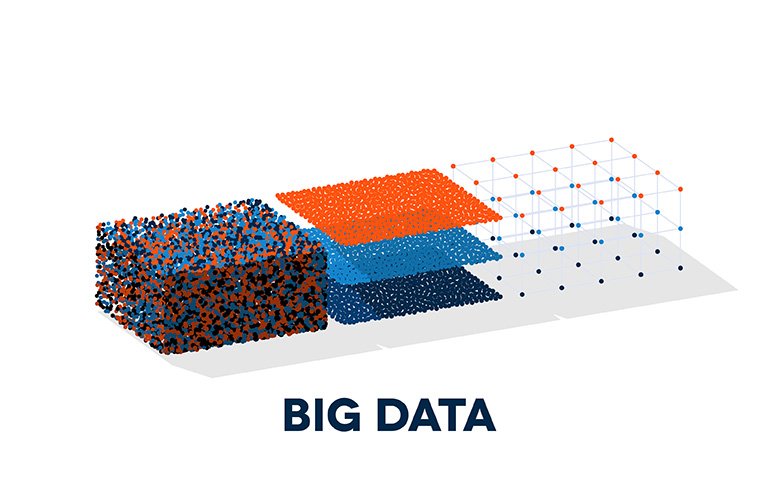
Stambia technology quickly links a Salesforce Cloud to Hadoop Big Data platforms to extend and enrich customer data.
Data scientists teams can drive Salesforce by mixing data provided from Big Data to:
- Optimize key online customer journey touch points
- Detect and mitigate fraud in real-time
- Enrich and give a score to your Salesforce customer data from your data lake
- Provide information from predictive models developed by Data Scientists
- Feed management and data processing platform DMP
How the component works ?
A component using native Salesforce's features
Salesforce component is fully integrated with Stambia data integration software, through "Metadata" object.
Stambia can reverse the description (Reverse Engineering) of any type of information from the Salesforce application, whether it is native (standard metadata) or specific (information, table, customer-specific application).
Reversing specific Salesforce field descriptions or tables, as well as internal IDs and dates, provides a comprehensive view of data and metadata.
This information is used in Stambia data flows to optimize uploads or detect changes in Salesforce.
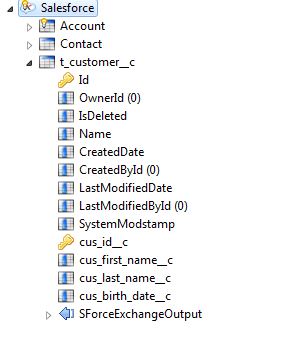
Salesforce meta data overview after Reverse Engineering:
A full range of features
Multiple ways for manipulating Salesforce data
There are several ways to load data:
- Bulk mode: Enables bulk loading, with package subdivision. This option reduces the consumption of Salesforce API calls to maximize performance.
- Unit call mode: Useful for handling Salesforce data unitarily in synchronous mode;
At each stage of the feeding process and whichever mode selected, Stambia has the capacity to know the state of the treatment and access the management of the rejects.
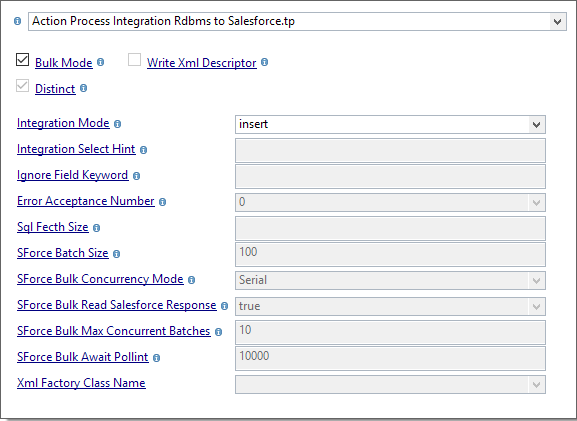
Smart integration and extraction methods
The Salesforce component allows to manage all types of data integration (Update, Insert, Upsert, Delete) and also the Recycle Bin object.
With simple mappings, defining the rules, Stambia generates and executes complex processes and provides automatic incremental integration of organizational data
Stambia can use natively :
- Salesforce Date and Time Fields
- Internal ID
- External ID (external application)
This information is used to detect changes and then compare the data against the existing data in a third-party application or in a database.

setting up with Salesforce.com credential
Replication and synchronization component
Stambia's replication template can quickly replicate Salesforce data to a third-party database or replicate data from that database to the Salesforce app.
This can be done with simple parameters and without complexity in the design.
Stambia universal mappings can also be used to complete and adapt the replication process in case it is necessary to implement particular transformations.
This component is optimized for Salesforce as well as for the underlying databases, to provide the highest level of performance.
The Salesforce to RDBMS replicator requires little development effort: with only a few parameters, it is possible to automatically create a source structure on the target.
Different modes are possible:
- Incremental update mode (for each run only add additional data)
- CDC (Change Data Capture) Mode (Searching "delta between" two or more data)
- A "cancel and replace" mode
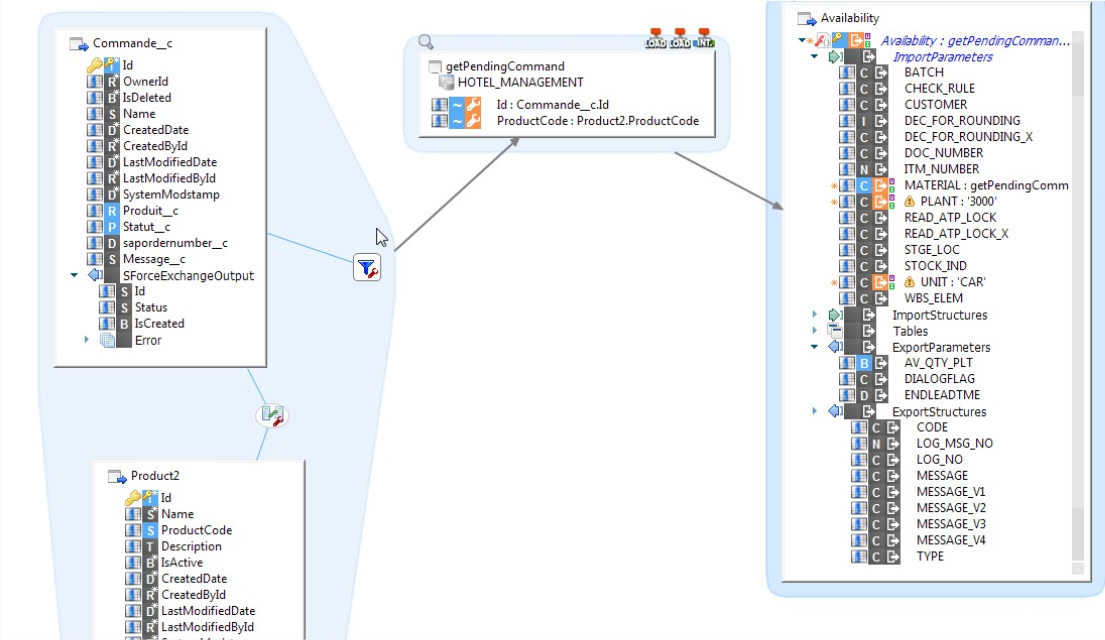
Stambia's Mapping using Salesforce meta data :
Technical specifications and prerequisites
| Specification | Description |
|---|---|
| Authentication |
|
| Reverse |
|
| DML Operations |
|
| Replications |
Replication to Databases is supported. The Replication Target can be any Rdbms Database. Advanced Mode:
|
| Change Data Capture | Change Data Capture (CDC) allows to follow and store all the changes of Salesforce objects. It is supported by the Replication Template. |
| Bulk Mode | Bulk Mode is supported for writing or reading data from / to Salesforce |
| Incremental mode management |
|
| Additional notes |
|
Want to know more?
Consult our resources
Did not find what you want on this page?
Check out our other resources:
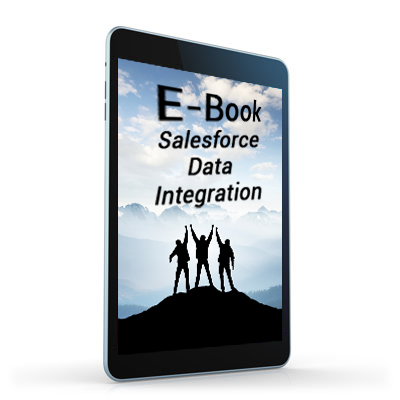
In the age of digital transformation and of resulting business transformations, organizations need to reconsider the vision they have of their customers.
The implementation of a CRM platform such as Salesforce is a part of this logic of developing a 360° vision of the customers.
However, setting up Salesforce is not an end in itself. Key success points of this "Client 360" strategy are the complete integration into the Information System and the organization's processes, and the design of an effective Salesforce integration architecture.
This document focuses on the value of building this data-centric architecture and proposes a way to achieve a fast and relevant Salesforce integration. ...
Read more: ebook : 6 benefits of Data Integration with Salesforce
Semarchy has acquired Stambia
Stambia becomes Semarchy xDI Data Integration


